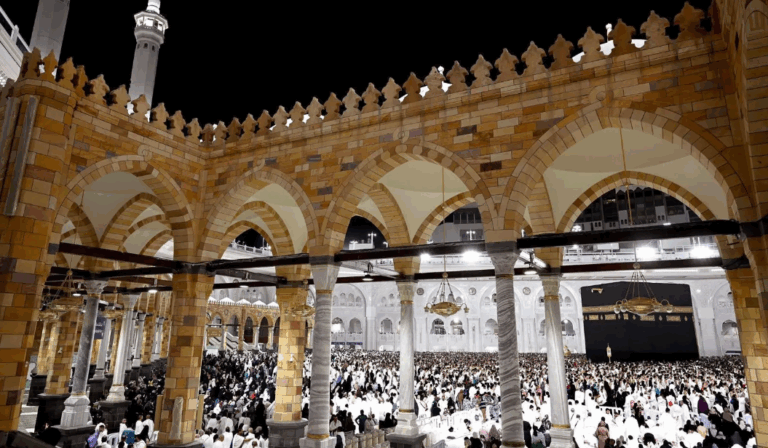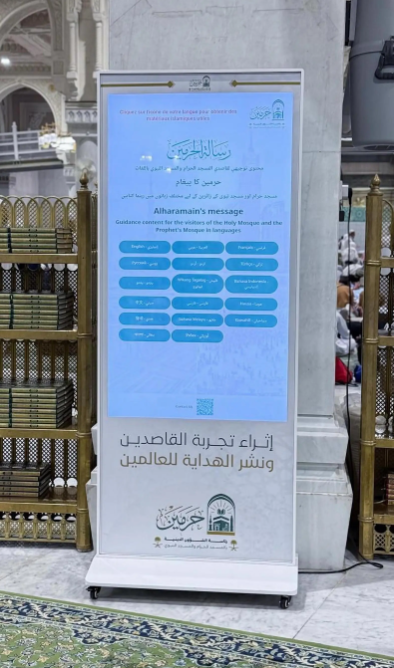**Título:** *Najran’s Doors: Echoes of Heritage*
**Intro:**
The carved wooden doors of Najran’s mud houses transcend functionality, embodying centuries of cultural identity. Crafted from Sidr or Athel wood, their intricate geometric patterns and size signal social standing, while distinct designs for entrances, yards, and rooms unite aesthetics with endurance. Yet, this vanishing artform whispers urgent tales of a fading legacy.
**Factbox (50 words):**
– **Materials:** Sidr/Athel wood (2-3 panels).
– **Symbolism:** Patterns and size denote social status.
– **Design:** Varies by door location (entrance vs. rooms).
– **Durability:** Some doors survive centuries.
– **Status:** Declining craft; once shaped by regional artisan styles.
– **Legacy:** Silent chronicles of Najran’s history.
**Najran’s Mud Houses: Where Doors Whisper Tales of Heritage and Craftsmanship**
In the heart of Najran, a region steeped in history, the mud houses stand as timeless monuments to a cultural legacy etched into their very walls. Among their most captivating features are the intricately carved wooden doors—masterpieces that transcend mere functionality to become emblems of identity, artistry, and social tradition. These doors are not just entrances; they are the prologue to a story of heritage that has endured for centuries.
### The Door as a Cultural Canvas
Najrani doors are the first chapter in the narrative of a home. Adorned with geometric precision and symbolic motifs, each door is a testament to the homeowner’s pride in their ancestry. The patterns—often a labyrinth of triangles, rhombuses, and floral arabesques—are more than decoration. They are a visual language, encoding stories of the region’s Bedouin roots, spiritual beliefs, and the natural landscapes of the Arabian Peninsula. For visitors, these doors offer a gateway into the soul of Najran, where every chisel mark reflects a dialogue between artisan and tradition.
### Craftsmanship Rooted in Nature and Status
Crafted from dense, resilient woods like **Sidr** (Christ’s Thorn) or **Athel** (Tamarix), the doors are built to withstand the harsh desert climate. The choice of wood is deliberate: Sidr, revered for its durability and rich hue, was often reserved for the homes of affluent families, while Athel, lighter yet sturdy, served more modest households. Artisans traditionally constructed doors from two or three vertical panels, their size and complexity subtly signaling the homeowner’s social standing. A grand, multi-paneled door with labyrinthine carvings might crown the entrance of a tribal leader, while simpler designs grace inner rooms or smaller homes.
### Design Philosophy: Location Dictates Form
The function of a door within the house shapes its aesthetic:
– **Main Entrances**: These are the most elaborate, featuring bold, symmetrical patterns and reinforced iron studs for protection. Their imposing stature serves as both a welcome and a statement of prestige.
– **Yard Doors**: Often lighter and more openwork, they balance privacy with ventilation, allowing breezes to filter through intricate lattice-like designs.
– **Room Doors**: Smaller yet no less detailed, they prioritize privacy, with tighter geometric grids and subtler embellishments.
Despite these variations, all share a commitment to harmony and endurance. Many doors, preserved by the arid climate and meticulous craftsmanship, have guarded homes for over 200 years.
### A Fading Art, A Silent Plea for Preservation
The decline of this ancient craft is a silent crisis. Once, master carpenters spent lifetimes honing regional styles—Najran’s doors distinct from those in Al-Ula or Jeddah. Apprentices learned to read the wood’s grain, to carve without wasting a sliver, and to imbue each design with meaning. Today, modernization and shifting priorities threaten this lineage. Few young artisans are drawn to the painstaking labor of hand-carving, opting instead for mass-produced alternatives.
### Conclusion: Guardians of Memory
Najran’s doors are more than relics; they are living archives. In their curves and angles, they hold the whispers of generations—of celebrations, hardships, and the quiet rhythm of daily life. To walk through one is to traverse a threshold between past and present. As these doors vanish, so too does a piece of Saudi Arabia’s intangible heritage. Their preservation is not merely about saving wood and mortar but honoring the hands and hearts that shaped them. In a rapidly changing world, they remind us that beauty lies in patience, and identity is carved not just in stone, but in the stories we choose to keep alive.
—
This piece blends historical insight with cultural reflection, inviting readers to see Najran’s doors as both art and artifact. For WordPress integration, consider pairing it with high-resolution images of the doors’ patterns, interviews with remaining artisans, or a map tracing Najran’s mud-house villages.
**FAQs About Najran’s Mud Houses and Their Iconic Doors**
1. **What makes the doors of Najran’s mud houses culturally significant?**
These doors symbolize Najran’s heritage, acting as artistic gateways that reflect social status through intricate geometric designs and durable craftsmanship tied to the region’s architectural identity.
2. **Which types of wood are traditionally used to craft Najran’s doors?**
Artisans use Sidr or Athel wood, prized for their durability and ability to withstand harsh climates, ensuring doors last centuries while maintaining aesthetic appeal.
3. **How do the doors reflect the homeowner’s social status?**
The wood quality, complexity of patterns, and door size indicate status—elaborate designs and larger dimensions often signify wealth and prominence in the community.
4. **Why do door designs vary within a single mud house?**
Designs adapt to function: main entrances feature bold, ornate patterns to impress visitors, while room doors prioritize subtlety, balancing aesthetics with practicality.
5. **What led to the decline of traditional door carpentry in Najran?**
Modernization, fewer apprenticeships, and a shift toward contemporary materials threaten this ancient craft, as skilled artisans age without successors to preserve regional styles.
6. **How do Najran’s doors differ from those in other Saudi regions?**
They stand out for their geometric precision, use of locally sourced woods, and cultural motifs unique to Najran’s history, unlike the simpler designs found elsewhere.
7. **Can tourists visit Najran to see these historic doors?**
Yes, the doors are a highlight for visitors exploring Najran’s mud houses, offering insights into the region’s architectural legacy and artistic traditions.
8. **What motifs are commonly featured on the doors?**
Artisans employ geometric shapes, floral patterns, and symmetrical designs inspired by Najran’s natural landscape and historical narratives, each carrying symbolic meaning.
9. **Are there efforts to preserve this fading craftsmanship?**
While documentation exists, sustained revival efforts are limited. NGOs and cultural organizations occasionally spotlight the craft, but systemic support for artisans remains scarce.
10. **How long can a traditional Najran door endure?**
Built for longevity, many doors survive centuries due to robust wood, minimal moisture exposure in arid climates, and meticulous construction techniques passed through generations.
11. **Do modern artisans still practice this traditional craft?**
Few artisans uphold the tradition, often blending old techniques with modern tools, though demand for purely traditional doors has dwindled in favor of cheaper alternatives.
12. **What role do doors play in Najrani storytelling?**
They silently narrate familial histories, regional triumphs, and cultural values through carvings that depict local legends, environmental themes, and communal identity.
13. **How are the doors structurally designed for durability?**
Multi-panel construction, reinforced joints, and elevated thresholds prevent warping and sand ingress, while wood treatments enhance resistance to pests and decay.
14. **Why are geometric patterns emphasized in the designs?**
Geometry reflects Islamic artistic principles, avoiding figurative representation while symbolizing unity and infinity, aligning with cultural values of harmony and resilience.
15. **Could these doors inspire contemporary architecture?**
Absolutely—their blend of art and function offers lessons in sustainable design, cultural storytelling, and craftsmanship, resonating in modern contexts seeking heritage-inspired aesthetics.
**Call to Action (CTA):**
Discover the timeless charm of Najran’s heritage! Plan your visit to witness the artistry of these historic doors firsthand. Support local craftsmen by sharing their stories or commissioning traditional designs. Follow our blog for more cultural insights and tag us in your Najran explorations using **#NajranHeritage**. Together, let’s keep history alive!
—
**Conclusión:**
Las puertas de Najran no son solo entradas físicas, sino símbolos de identidad y resistencia cultural. Aunque el tiempo y la modernidad amenazan con borrar estas obras maestras, su legado perdura como testimonio de la creatividad humana y el orgullo comunitario. Preservarlas es honrar las raíces que nos conectan con el pasado y enriquecen nuestro futuro.
—
**Agradecimiento:**
Gracias por acompañarnos en este recorrido por la arquitectura tradicional de Najran. Tu interés ayuda a mantener viva la conversación sobre el valor del patrimonio cultural. ¡Sigue explorando, compartiendo y celebrando las maravillas que nos unen como humanidad!









